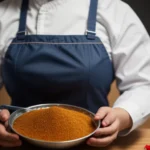France is renowned around the world for its delicious and diverse cuisine, but often when we think of French food, we immediately picture baguettes, croissants, and escargot. While these dishes certainly hold a special place in French cuisine, they are just the tip of the iceberg when it comes to the culinary offerings of this richly diverse country. Beyond the stereotypical images of French food that we see in movies and travel guides, there is a world of vibrant and unique regional cuisines waiting to be discovered. In this article, we will take a closer look at the vast diversity of regional French cuisine, exploring the flavors, traditions, and ingredients that make each region’s food so special.
1. Introduction to Regional French Cuisine
French cuisine is often spoken of as a single entity, but in reality, the food of France is incredibly diverse and varied. Each region of France has its own unique culinary traditions, influenced by factors such as geography, climate, history, and culture. From the hearty meat and potato dishes of the Alsace region to the seafood-filled dishes of Provence, the food of France reflects the country’s rich history and diverse landscape.
2. Brittany: A Seafood Lover’s Paradise
Located in the northwest of France, Brittany is known for its stunning coastline and excellent seafood. The region’s cuisine is heavily influenced by its maritime location, with dishes such as moules marinière (mussels steamed in white wine) and fish stew being popular choices. Crêpes, both sweet and savory, are also a specialty of the region and can be found in abundance in Brittany’s many crêperies.
3. Alsace: A Taste of Germany in France
Situated on the border with Germany, Alsace has a unique blend of French and German influences in its cuisine. Alsatian dishes are typically hearty and filling, often featuring ingredients such as pork, cabbage, and potatoes. Choucroute garnie, a dish of sauerkraut cooked with various meats, is a staple of Alsatian cuisine, as are tarte flambée, a type of pizza topped with crème fraîche, onions, and bacon.
4. Provence: The Taste of the Mediterranean
Provence, in the southeast of France, is famous for its sunny climate, beautiful landscapes, and delicious Mediterranean cuisine. The region is known for its use of fresh herbs, olive oil, and garlic, which give dishes such as ratatouille and bouillabaisse their distinctive flavors. Provence is also home to a variety of delicious cheeses, including the famous goat cheese, chèvre.
5. Normandy: A Land of Apples and Cream
Located in the north of France, Normandy is known for its fertile farmland and delicious dairy products. The region is famous for its apples, which are used to make the region’s famous cider and calvados (apple brandy). Normandy is also known for its rich and creamy dairy products, such as Camembert cheese and crème fraîche, both of which feature prominently in Normandy’s cuisine.
6. Burgundy: A Region for Wine and Beef Lovers
Burgundy, in east-central France, is best known for its world-renowned wines, but the region’s cuisine is also worth seeking out. Burgundian dishes often feature beef, particularly in dishes such as boeuf bourguignon, a rich stew made with red wine and mushrooms. The region is also known for its delicious Charolais beef, which is prized for its tenderness and flavor.
7. The Basque Country: A Unique Culinary Heritage
Located in the southwest of France, the Basque Country has a unique culinary heritage that sets it apart from the rest of France. Basque cuisine is known for its bold flavors and use of ingredients such as peppers, tomatoes, and seafood. Pintxos, small bites of food served on toothpicks, are a popular Basque dish, as is bacalao a la Vizcaína, a dish of salt cod cooked in a rich tomato sauce.

8. Lyon: The Capital of Gastronomy
Lyon, often referred to as the gastronomic capital of France, is home to a wealth of delicious dishes and culinary traditions. The city is known for its bouchons, traditional Lyonnaise restaurants that serve hearty dishes such as saucisson chaud (hot sausage) and quenelles de brochet (pike dumplings). Lyon is also famous for its rich and indulgent desserts, such as tarte citron, a lemon tart made with a buttery pastry crust.
9. The Loire Valley: A Feast for the Senses
The Loire Valley, located in central France, is known for its stunning châteaux and lush vineyards, but the region’s cuisine is equally impressive. The valley is a paradise for food lovers, with dishes such as rillettes, a spread made from pork, and tarte Tatin, a caramelized apple tart, being popular choices. The region is also known for its delicious goat cheeses, such as Sainte-Maure de Touraine and Crottin de Chavignol.
10. Corsica: A Taste of the Mediterranean
Situated in the Mediterranean Sea, Corsica has a cuisine that is heavily influenced by its location and climate. The island is known for its delicious cured meats, such as lonzu (pork loin) and figatellu (pork liver sausage), as well as its fresh seafood, including anchovies, sardines, and sea urchins. Corsica is also known for its unique cheeses, such as brocciu, a soft cheese made from sheep or goat’s milk.
11. The French Riviera: A Decadent Delight
The French Riviera, also known as the Côte d’Azur, is a playground for the rich and famous, but it is also a paradise for food lovers. The region is known for its fresh seafood, such as bouillabaisse, a traditional fish stew, and pissaladière, a savory tart topped with caramelized onions and anchovies. The French Riviera is also famous for its sun-ripened fruits and vegetables, which are featured in dishes such as ratatouille and salade niçoise.
12. The Pyrenees: A Blend of French and Spanish Influences
The Pyrenees, a mountain range that straddles the border between France and Spain, has a cuisine that reflects the region’s unique cultural heritage. Pyrenean dishes often feature a blend of French and Spanish influences, with ingredients such as ham, cheese, and seafood playing prominent roles. Foie gras, a rich and luxurious dish made from duck or goose liver, is a popular choice in the region, as is confit de canard, duck that has been cooked in its own fat.
13. Reunion: A Taste of the Tropics
Located in the Indian Ocean, Reunion is an overseas department of France that has a cuisine that is heavily influenced by its tropical location. The island’s cuisine is a blend of African, Indian, and French influences, with dishes such as cari (a spicy curry dish) and rougail saucisse (sausage stew) being popular choices. Reunion is also known for its delicious tropical fruits, such as lychees, mangoes, and pineapples, which are used in a variety of dishes and desserts.
14. Corsica: A Unique Blend of French and Italian Cuisine
Corsica, an island in the Mediterranean Sea, has a cuisine that is a unique blend of French and Italian influences. The island’s cuisine features ingredients such as chestnuts, wild boar, and sheep’s milk cheese, reflecting its rugged landscape and rich culinary traditions. Corsican dishes such as civet de sanglier (wild boar stew) and fiadone (a ricotta cheesecake) are popular choices, as are the region’s delicious charcuterie and wines.
15. Conclusion: Exploring the Rich Tapestry of Regional French Cuisine
As we have seen, the culinary landscape of France is incredibly diverse and varied, with each region offering its own unique flavors, traditions, and ingredients. From the seafood-filled dishes of Brittany to the hearty meat and potato dishes of Alsace, the food of France is a rich tapestry of flavors and influences waiting to be explored. So the next time you find yourself in France, don’t just stick to the baguettes and croissants – venture out and discover the delicious regional cuisines that make this country a gastronomic paradise. Bon appétit!
FAQs about “Beyond Baguettes: The Diversity of Regional French Cuisine”
- What makes “Beyond Baguettes: The Diversity of Regional French Cuisine” an intriguing exploration of French gastronomy? This book delves into the lesser-known aspects of French cuisine, highlighting the diverse regional specialties and culinary traditions that extend beyond the stereotypical image of baguettes and croissants.
- Which regions of France are represented in this book? “Beyond Baguettes” features a comprehensive exploration of various regions across France, showcasing the unique flavors, ingredients, and cooking techniques that define each culinary destination.
- Are specific French dishes and ingredients highlighted to exemplify regional diversity? Yes, this book features a curated selection of French dishes and ingredients from different regions, offering readers a taste of the diverse culinary landscape of France. From hearty stews in the Alps to seafood specialties on the coast, each dish reflects the cultural heritage of its region.
- How does this book celebrate the cultural and culinary diversity of France? This book celebrates the cultural and culinary diversity of France by providing insights into the historical influences, local customs, and seasonal variations that shape regional cuisines. It explores the rich tapestry of flavors and traditions that make French gastronomy so unique.
- Can readers expect to gain practical tips for exploring regional French cuisine from this book? Absolutely! “Beyond Baguettes” offers practical tips, travel recommendations, and recipe ideas for readers interested in exploring regional French cuisine. Whether you’re planning a culinary journey through France or simply curious about its diverse culinary heritage, this book has something for everyone.
Advantages:
- Culinary Exploration: The title “Beyond Baguettes: The Diversity of Regional French Cuisine” immediately suggests an exploration of the varied culinary traditions across different regions of France, appealing to readers interested in discovering the depth and diversity of French cuisine.
- Educational Value: By highlighting the diversity of regional French cuisine, the title offers readers valuable insights into the unique ingredients, flavors, and cooking techniques that characterize each region, enriching their understanding of French gastronomy.
- Cultural Appreciation: The title promotes cultural appreciation by celebrating the culinary heritage and traditions of France, inviting readers to learn about and savor the distinct flavors and specialties of different French regions.
- Gastronomic Adventure: Readers can anticipate embarking on a culinary journey through France, discovering lesser-known dishes and regional specialties that may not be as widely recognized as French classics like baguettes and croissants.
- Inspiration for Cooking and Travel: The title may inspire readers to experiment with French recipes inspired by regional cuisines or to plan culinary trips to explore the diverse food offerings across France.
Disadvantages:
- Oversimplified Focus: While the title emphasizes the diversity of regional French cuisine, it may oversimplify the complexity of French culinary traditions and overlook lesser-known regional specialties, potentially limiting the breadth of the discussion.
- Cultural Stereotyping: Focusing solely on the diversity of French cuisine may perpetuate stereotypes about French food and culture, potentially overlooking the multifaceted nature of regional cuisines and culinary influences within France.
- Accessibility: Some regional French ingredients and dishes may be difficult to find outside of France or major culinary hubs, limiting the practicality of exploring the diversity of French cuisine for readers in other regions.
- Subjectivity: The selection and interpretation of regional French dishes may be subjective and may not align with every reader’s taste preferences or expectations, potentially leading to disappointment if certain regions or dishes are overlooked or misrepresented.
- Audience Engagement: While the title appeals to readers interested in culinary exploration and French cuisine, it may not attract those seeking a more casual or simplified introduction to French cooking.
















